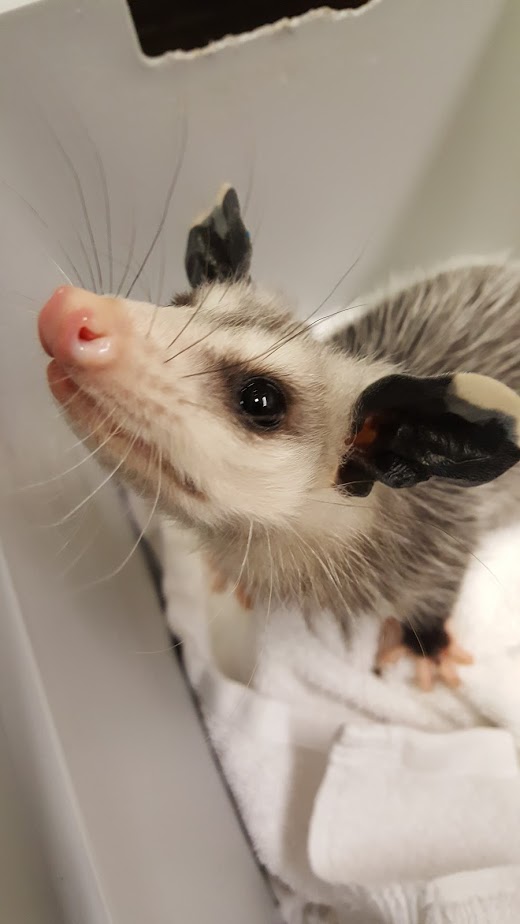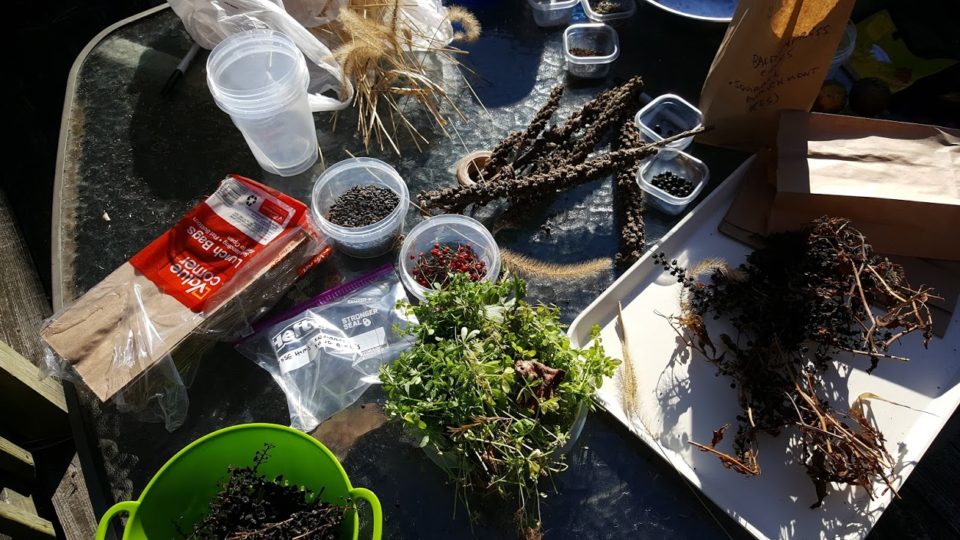Wild Foods for Wildlife in Rehab

How You Can Help Wildlife
When I walk I graze, I can't help it. I love looking for wild foods to munch on or smell. It's a lot fun to introduce students and adults to the bounty of nature that is all around them if they learn how to look. The other part to that is how to identify plants that are safe to snack on. At a recent conference I was made aware of how I could benefit more than just myself when I'm out there hiking around. Bear with me as I shift topics, but this will all make sense shortly.
As an apprentice wildlife rehabilitator I've always known that it's important to provide foods and stimulation for the animals that come into our care. Using foods that are as close as possible to their natural foods and environments as possible is really important. Until now I've stumbled around using prescribed diets, field guides, and books that could help us approximate those foods. I've pulled worms from compost for rails, to make mud-pie bowls of crawly goodness, and I've picked poke-weed for an impatient grackle, and I've cut oak leaves for squirrels to make nests (called dreys) in their hammocks. Wild food was one of those question marks for me, because I didn't want to bring anything into the center that wasn't safe, and I also wasn't always sure how to prepare it. (Is there a recipe for grubs and worms?) That's where this fun new website comes in. It's called Wild Foods4Wildlife at wildfoods4wildlife.com. The founder, Kate Guenther, is a wildlife rehabilitator who spoke at a recent conference in Virginia. I found her website interesting and very helpful, so I thought I'd share it with you.
If you're not convinced how happy food makes captive wild animals, then watch this video (yes, they really do smack that loudly when eating, especially mice):
Here you can see a screen shot of the home page of the wildfoods4wildlife page. Note the three bars in the upper right hand corner, this has most of the drop-down menus you'll need (it's hard to navigate but there's great content if you search around)
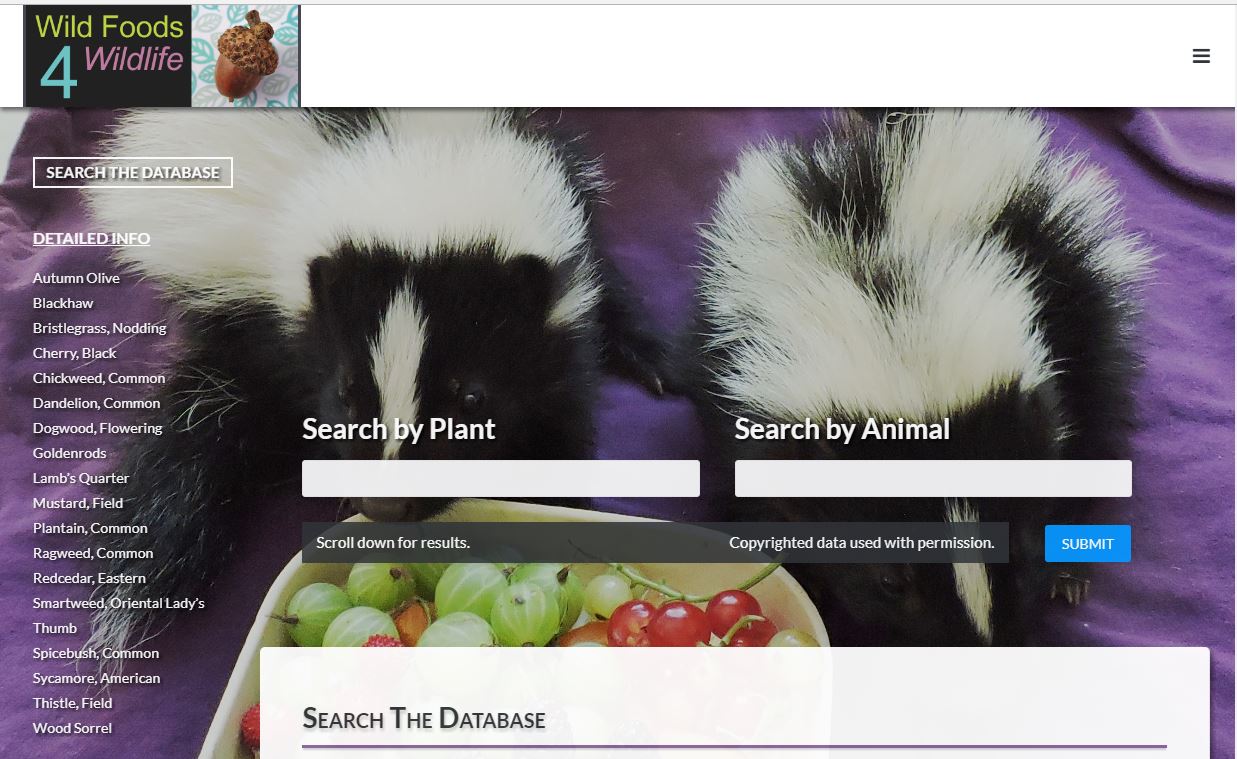
WHY WILD FOOD?
There are a myriad reasons for using wild foods with animals that come in for wildlife rehabilitation, and here are a few key ideas:
- Wild foods are matched to the animal- animals live and thrive in specific ecosystems, and environments. They find the food they need in those wild places. Humans can't always match that from the contents of a grocery store, wild foods provide animals the foods that match their specific metabolic needs.
- Gives more complete nutrition- humans can only approximate the vitamin and nutritional requirements of animals, wild foods help replicate this more accurately.
- Provides comfort- think about when you're sick and you want familiar comfort foods, hospital food is hardly comforting. Wild animals are stressed when they come into captivity, this is one way to help reduce that stress.
- Variety is the spice of life- the same foods get old for you, just like they do for animals. The enrichment of wild foods allows animals to do their natural behaviors in captivity, be it scratching for nuts, hoarding pine needles for bedding, or digging for crickets and worms.
- Teach the babies- baby animals that come into the clinic may not get the training they need to be functioning adults in the wild, especially if they over-winter in the center or if no parents or older animals are around. Wild foods help these youngsters learn a search image for what they should be looking for in the wild, this can be anything from food to bedding.
- Keeps them wild- by providing wild foods the animals stay more wild, so that they can release more successfully back into their native habitat.
Wildlife rehabilitators have a matter of practicality on their hands when it comes to wild foods and enrichment. In the middle of baby squirrel and bird season, with 50 baby squirrels to feed, 30 baby birds, and a whole collection of ducks, injured turtles, and other critters, it may not be feasible to go out and collect native browse. This is where you can help. Not only can you work on your plant identification skills, but you can help the rehabilitation centers in the process.
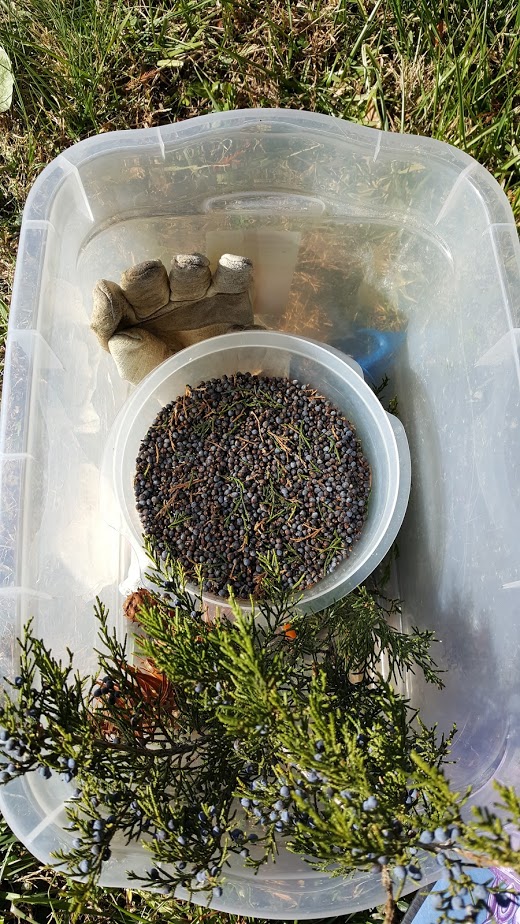
HOW DO YOU GET STARTED?
Kate's website has some great ideas on it already, you can read her "Getting Started" Web page here: https://wildfoods4wildlife.com/who-is-this-site-for/. I would suggest you start with:
- Get to know your local rehabilitator and clinic, as well as their needs.
- Choose one or two plants to start with, something easy and familiar or ONE new plant. You may draw inspiration from the website, or database, or ask your rehabilitator (for example, oak leaves for enrichment are super easy, as are black walnuts for squirrels).
- Get a good plant guide for your region, this may be trees, shrubs, flowers, or edible plants
- Go on guided hikes with experts, visit local nature centers.
- Be sure that you harvest in safe places that are not along roads (subject to smog or heavy metals from cars), and away from human and pest waste.
- Ask permission to collect where you need to collect.
- Wear the proper seasonal clothing (long pants, long sleeves, hat, etc), and remember that insect repellent can rub off on plants that you collect so be careful!
- Invest in a good pair of herb shears, clippers, and gloves
- Use reusable shopping bags, the plastic hard-sided kind, for holding plants while you collect. Pillow cases work well too.
- Know when/how to harvest your food and study how to dry or store those foods. The Wild Foods4wildlife website has some great information on this. The website is a bit confusing, because you have to constantly use the drop down menu on the side (look in the top right corner and keep digging down through the drop down menus).
- Make sure you know if something could be toxic, and that you have the correct plant ID (BE SURE!). As Kate says, "When in doubt, leave it out!" it's better safe than sorry. Search her database to see if what you're looking for is in there. It's a fairly new website so be patient and check multiple sources.
- Always clean the foods and materials you collect, this could be anything from a salad spinner and quick wash to using a light wash with Dr. Brawners and grapefruit seed extract (see website: https://wildfoods4wildlife.com/storing-leafy-greens/).
- If you're collecting seeds or fruits you may need to get an old colander and/or fan for winnowing.
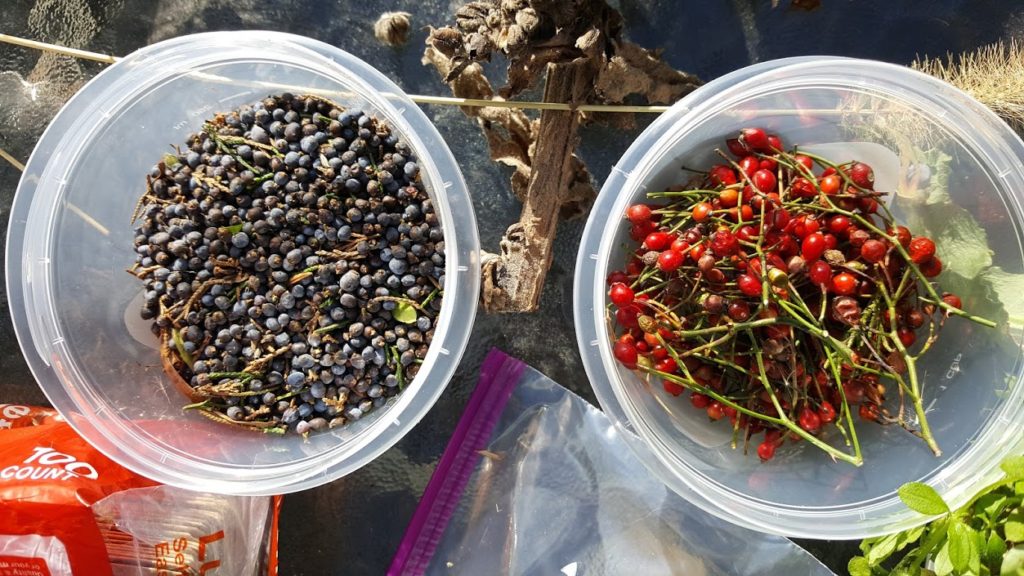
Remember, not all wild foods are plants. You could also help with collecting or growing earthworms, meal worms, grubs, crickets, or other invertebrates. Squirrels need things to chew on, such as pieces of antler, bamboo, and apple wood. Rehabilitators also need natural wood perches for songbirds (clean and sanitized) and even wooden boxes such as squirrel boxes, blue bird boxes, or hidey hole boxes for animals. There are plenty of easy to collect materials out there that you could start with. It's best to consult with your rehabber to see what they need first. Here are some common things:
- Earthworms
- Crickets
- Slugs
- Fresh fish (can be frozen)
- Maple or oak leaves on branches
- Pine needles
- Hickory nuts
- Walnuts
- Acorns (see preservation information)
- Pine cones
- Pine nuts
- Magnolia cones
- Fox tails
- Poke weed plants
- Wood sorrel
- Plantain
- Goldenrod
- Chickweed
There are a lot of ways that you can help provide enrichment to the animals, from raising earthworms in compost to drilling blocks that you can put acorns into, or event stuffing toilet paper tubes with wild nuts and pine needles for squirrels. Again, ask your rehabilitator for what they need. If you know people who specialize in primitive skills classes, then share this information with them, maybe you can create a neat connection between teachers, students, and rehabilitators!

NOT JUST REHABILITATED ANIMALS
Wild foods are for wild animals. Think about how wild foods could also be incorporated into what you offer wild life in the winter too. Can you rear meal worms over the winter to offer blue birds? Could you put out dried poke weed or pine cones for birds when it snows? Could you leave out antlers for the squirrels or egg shells for birds in Spring (they need the extra calcium and will eat them with relish! Be sure to crush them into small pieces).
If you're not sure where to find a local rehabilitator to help then try one of these directories: https://www.nwrawildlife.org/?page=Find_A_Rehabilitator or https://wildliferehabinfo.org/index.htm.
If you can't help a wildlife rehabilitator by volunteering at a clinic then consider volunteering your time collecting wild foods and stuffs or even donating your time and talents sewing animal hammocks, creating bluebird or squirrel boxes, or donating money to help. Every little bit really does help!
